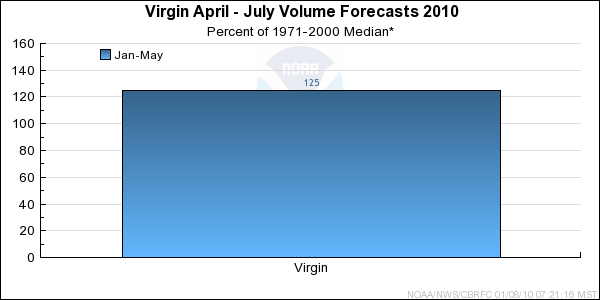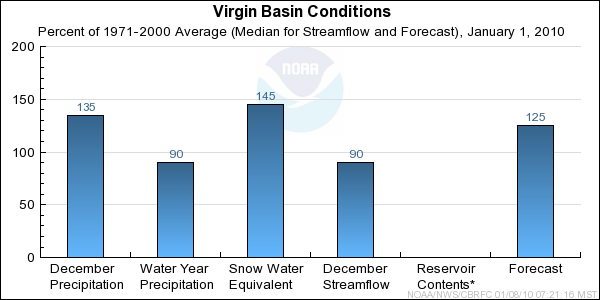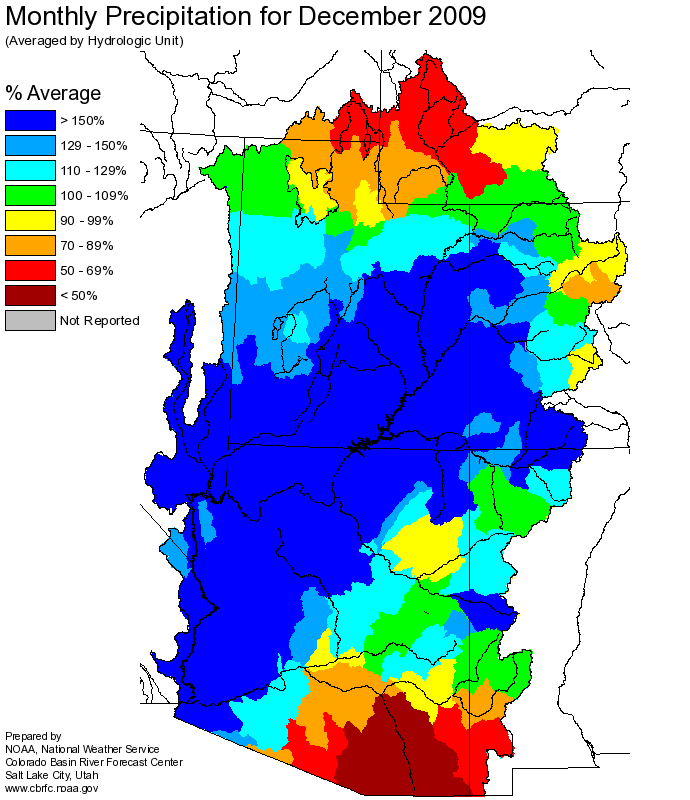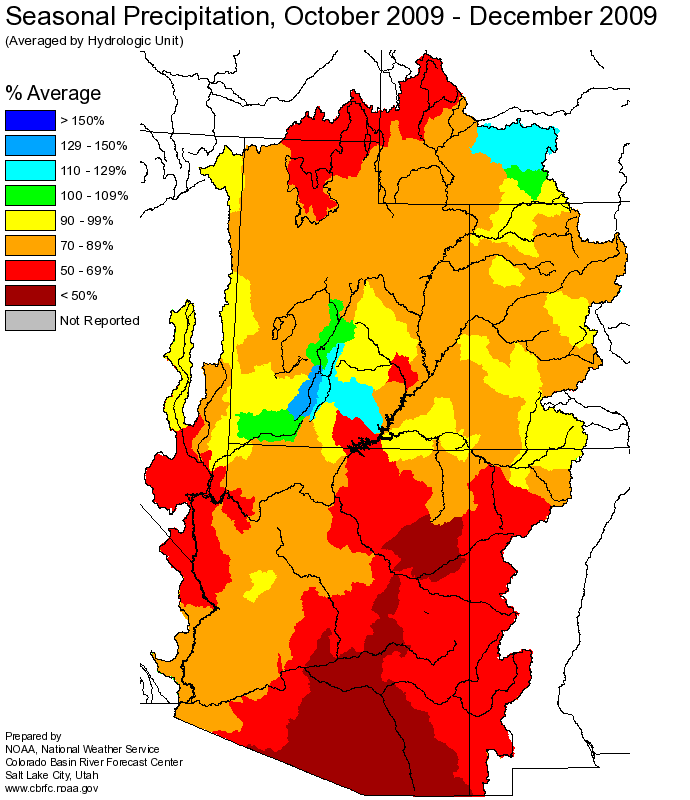The following conditions influenced this month's forecasts:
Precipitation:
Seasonal October-December
precipitation was near 90 percent of average in the Virgin Headwaters, and 65 percent
of average basin wide.
December
precipitation was near 190 percent of average in the Virgin Headwaters, and 120 to 170 percent of average
throughout the remainder of the basin.
Snow:
January 1st snowpack in the Virgin River Basin ranged from 105 to 290 percent of average. January 1st
snowpack is near 50 percent of the average seasonal peak.
Virgin River Basin
Snow Plot.
Soil Moisture:
Below average precipitation during the autumn months created drier soil moisture conditions.
Climate Forecasts:
El Nino climate conditions suggest increased chances of precipitation in this area. The El Nino
influence was accounted for in generation of these forecasts.
Forecast Summary:
Drier soil moisture conditions tend to reduce forecast volumes. However, the presence of El Nino
climate conditions combined with much above average snowpack resulted in April-July forecast volumes
between 115 and 135 percent of median.
Differences between the full period forecasts and the residual forecasts may not exactly equal the actual observed volumes due to rounding conventions (see Definitions section).





